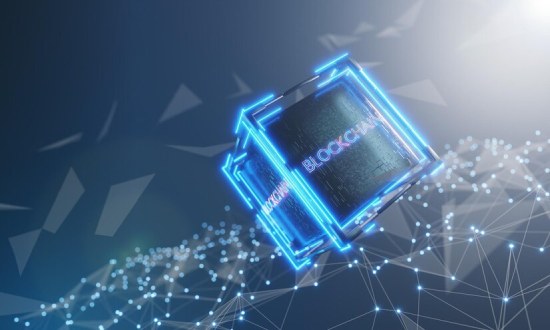-
The process of raising an ICO with the help of an ICO Development Services Company
Whitepaper Creation
A whitepaper outlines the problem along with the solution (the project) by the company conducting an ICO campaign. It details the proposed product or service or technology work procedure. A top-quality whitepaper must be clear, concise and extremely informative.
It should have one aim: persuade investors to buy tokens issued for the project. However, to succeed, the whitepaper needs to be informative, persuasive, satisfactory and reassuring for every investor showing an interest.
Resource Gathering
The ICO Development Services Company will decide on ICO mechanisms: which token platform or Blockchain to utilize, how to structure the sale, pricing of the sale, which model to use, etc.
Community Response
Then, the ICO Development Services Company will market the ICO prototype to a specific audience, e.g., early investors, technical advisors, industry insiders etc.
After obtaining the feedback, they would revise the technology, business, and ICO roadmap.
Post this, they will market to a wider public audience through various ICO marketing strategies, such as by attending meetups and writing public blog posts.
Settling legal problems
The legal team helps counsel about jurisdiction-related regulations, investment syndicates, corporate structure, taxes, securities, money transmitter laws, etc.
They would help find legal advice regarding complications and issues in the project concept. Considering this feedback, they revise the whitepaper and ICO strategies.
Pre-sale (voluntary)
The team may choose to conduct token presale.
Companies may need to gather funds to pay legal, operational, and development costs, as well as to prepare themselves for the complete ICO.
The pre-sale could either be private or public.
Planning a Digital Marketing Strategy
A company’s online business faces are the website and its social and digital media channels. These are the portals where its future prospects (contributors) will see all its work.
The team of the ICO Development Services Company will ensure to publish details and share them on various digital channels as per the whitepaper. The information would include the token allocation, links to the company’s social media accounts, proposed funds usage, communication channels and the company’s official blog post (optional).
Public Sale
The team of the ICO Development Services Company will market the ICO to a myriad of audiences through various online and offline channels, as per the need.
The team may also ‘air-drop’ some tokens to popularize the ICO. It may seed the tokens in the open market. This would be done for creating an initial momentum and expanding its user and trading community.
Announce the ICO
The actual dates of the ICO will be announced and opened to the public.
Release of tokens
The token-issuer company would disperse utility tokens after reaching a specific capital described within the offer. The company would credit the tokens to the investors' crypto wallet, considering the investment made.
After successfully raising the funds received via the ICO and the distribution of tokens, the company sets out on its obligations.
ICO best practices
Transparency
Publish a detailed white paper with a comprehensive description:
- The business case, technology
- Team
- Network
- ICO structure
- Total token supply
- Proposed usage of funds
- And development roadmap
Refer and cite existing research to support and validate the technology and business.
Disclosures
Inside the white paper and on the website, discuss anticipated risks of the ICO and business
Communicate ICO details clearly to manage token buyer expectations.
Be honest and transparent about progress and setbacks.
Clear up community-generated misconceptions.
Conduct security audits on technology. Have third-party experts review the white paper.
ICO Methods
Put a hard cap on total contribution worth.
Choose a multi-phase ICO; a portion of tokens would get sold at the beginning and other portions would after the achievement of set development milestones.
Have a ‘whitelist’ of contributors before the ICO. Only permit these contributors to join the ICO. Contributors may be asked to provide KYC information to achieve compliance needs. Create a lock-up period for ICO tokens and prevent mass token sell-offs after an ICO.
Underlying Technology
Consider having open-source software available to others for the auditing process. Utilize thoroughly researched smart contracts, cryptographic algorithms, and software dependencies.
Development Strategy
Outline a development roadmap for setting development milestones.
For achieving each milestone, set time and cost estimate. Communicate with token buyers about this development roadmap and update them on the organization’s progress.
Jurisdictions and Regulations
Know the potential legal risks and implications regarding securities, tax, money transmitter, consumer protection, investor protection, broker-dealer, and investment management by consulting a legal adviser. Prepare a Terms and Conditions document and communicate with all token buyers to clarify the legal rights, obligations, risks, and implications of participating in the ICO.
Eventually, form an open dialogue with regulators to deal with regulatory uncertainty.
Also Read:
- Raising Funds Through ICOs
- ICO Campaigns vs Venture Capitalist Funding
- Understanding ICO Scams
- Blockchain Beyond Cryptocurrencies

Our Offices
INDIA
Emaar Digital Greens, Sector 61,
Gurugram, Haryana
122011.
Welldone Tech Park,
Sector 48, Sohna road,
Gurugram, Haryana
122018.







 Blockchain Application Development
Blockchain Application Development
 Fintech Blockchain App Development
Fintech Blockchain App Development
 Hyperledger Application Development
Hyperledger Application Development
 STO Development Services Company
STO Development Services Company
 Exchange Development
Exchange Development
 Cryptocurrency Wallet Development
Cryptocurrency Wallet Development





